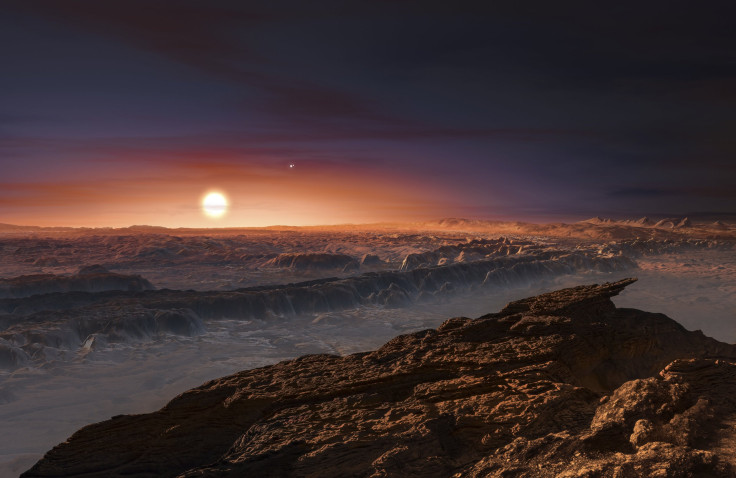Second Earth, Proxima b, discovered by scientists, is a game-changer

A “second Earth,” orbiting our planet’s closest star may have the right conditions to sustain alien life forms, astronomers have revealed. The mystery world spotted by experts at the European Southern Observatory may finally answer if we are alone in the universe. The planet circles the “goldilocks zone” of Proxima Centauri, the red dwarf star just four light years away.
The planet, named Proxima b, is at an optimum distance from the star to host alien life. It’s not too far away from the star for water to freeze nor too close that water would boil away. This is a significant discovery as liquid water is believed to be essential in development of life.
“Succeeding in the search for the nearest terrestrial planet beyond the solar system has been an experience of a lifetime, and has drawn on the dedication and passion of a number of international researchers. We hope these findings inspire future generations to keep looking beyond the stars. The search for life on Proxima b comes next,” Dr, Guillem Anglada-Escude from Queen Mary University of London told The Sun.
As per the findings the Earth-like planet is only a fraction bigger than our planet and has a rocky surface. University of Hertfordshire’s Dr. Mikko Tuomi said it is the closest exoplanet to Earth and may also be the closest to support life outside our Solar System.
British researcher Nick Pope called this discovery “game-changing” and said that every effort should be made to find out more about Promixa b, to look for evidence of life, even intelligent life. The study has been published in the journal Nature.
Source: YouTube/nature video
Astronomers made the discovery while studying Proxima Centauri using a special instrument on the 3.6-metre telescope operated by the European Southern Observatory at La Silla in Chile’s Atacama Desert. They were able to spot a “wobble” in the star’s position being caused by the interaction with the planet’s gravity.
The planet Proxima b is 1.3 times more massive than Earth and orbiting at a distance of 7.5 million kilometres.
“If further research concludes that the conditions of its atmosphere are suitable to support life, this is arguably one of the most important scientific discoveries we will ever make,” said co-author Dr. John Barnes from the Open University.





















